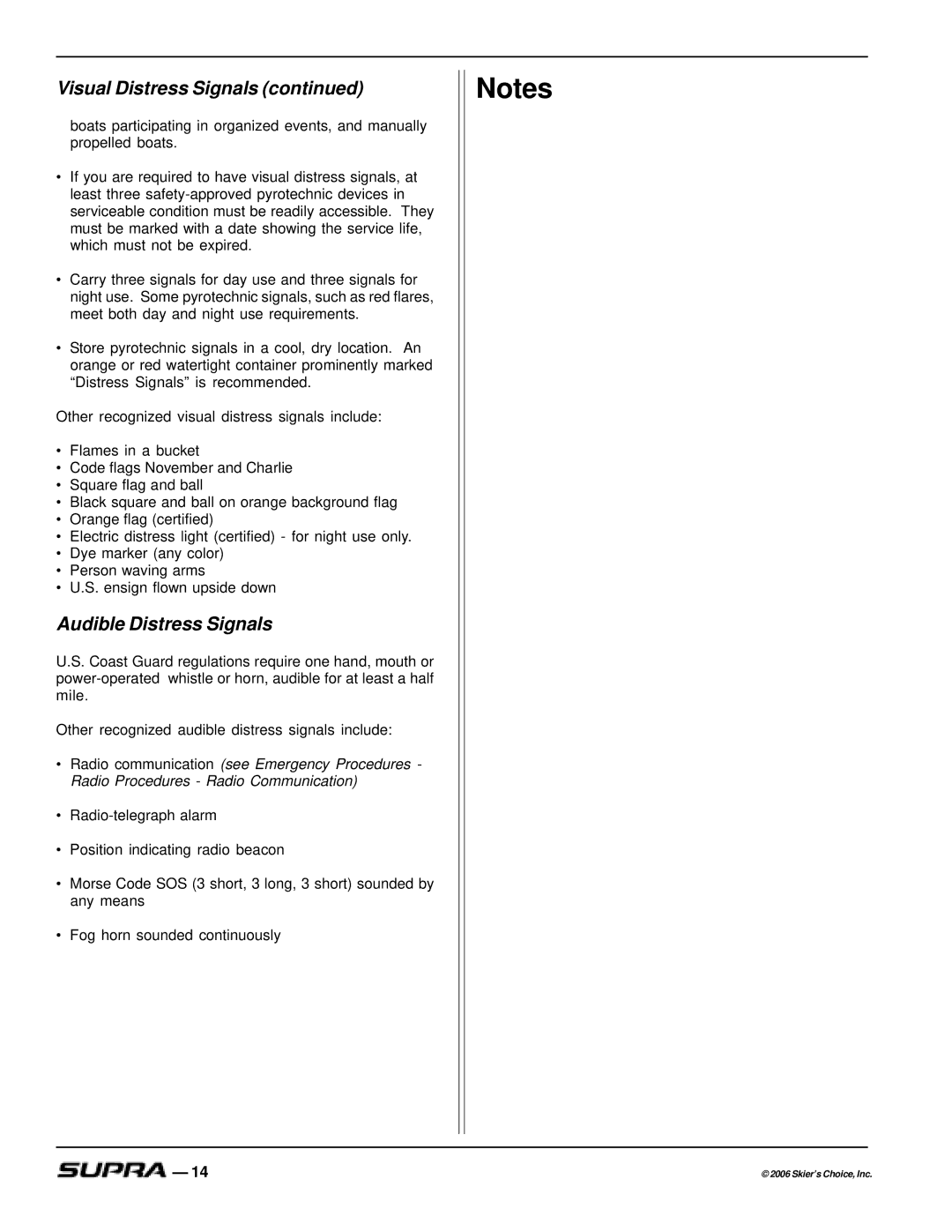
Visual Distress Signals (continued)
boats participating in organized events, and manually propelled boats.
•If you are required to have visual distress signals, at least three
•Carry three signals for day use and three signals for night use. Some pyrotechnic signals, such as red flares, meet both day and night use requirements.
•Store pyrotechnic signals in a cool, dry location. An orange or red watertight container prominently marked “Distress Signals” is recommended.
Other recognized visual distress signals include:
•Flames in a bucket
•Code flags November and Charlie
•Square flag and ball
•Black square and ball on orange background flag
•Orange flag (certified)
•Electric distress light (certified) - for night use only.
•Dye marker (any color)
•Person waving arms
•U.S. ensign flown upside down
Audible Distress Signals
U.S. Coast Guard regulations require one hand, mouth or
Other recognized audible distress signals include:
•Radio communication (see Emergency Procedures - Radio Procedures - Radio Communication)
•
•Position indicating radio beacon
•Morse Code SOS (3 short, 3 long, 3 short) sounded by any means
•Fog horn sounded continuously
Notes
— 14 | © 2006 Skier’s Choice, Inc. |
